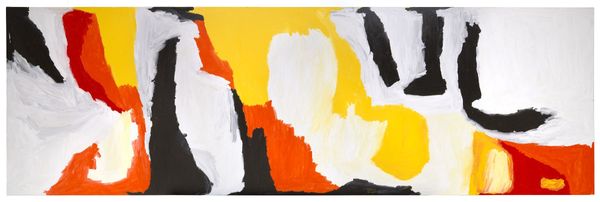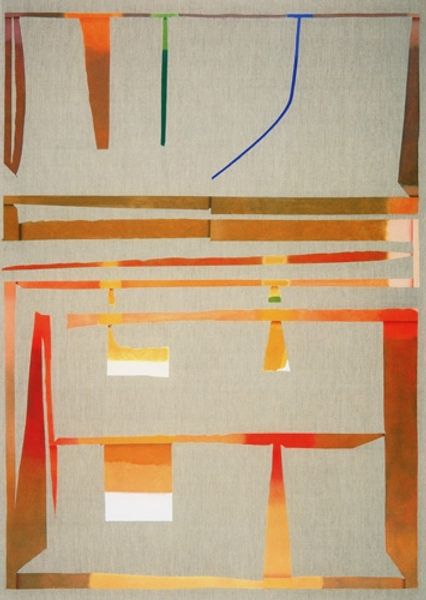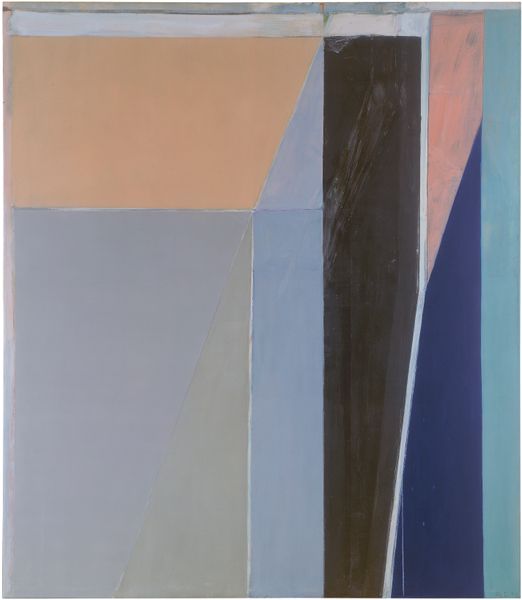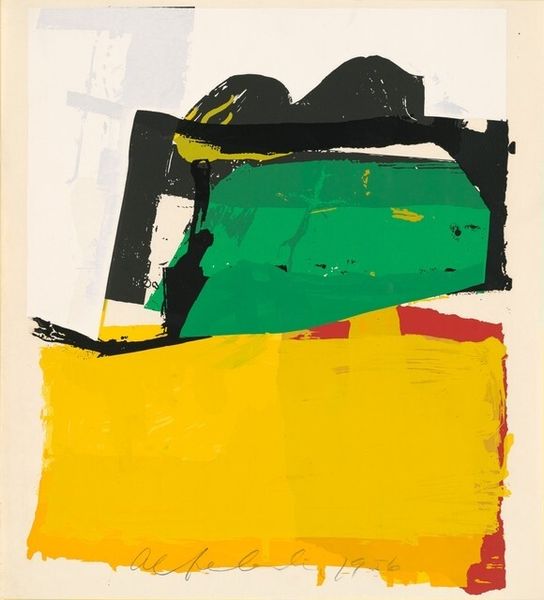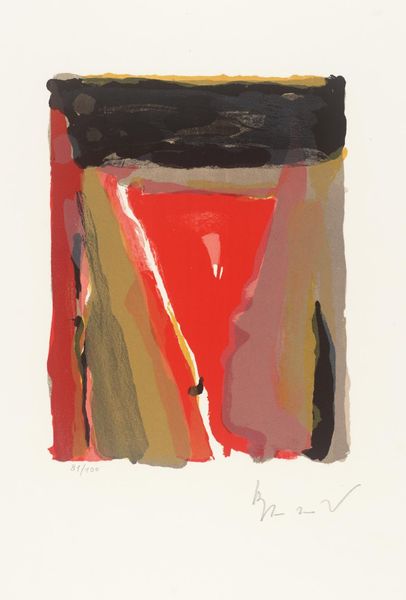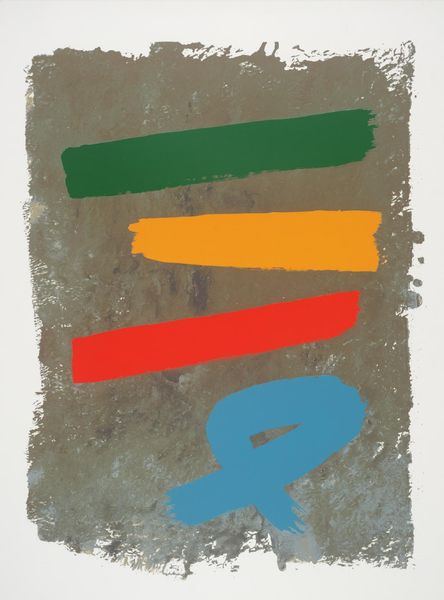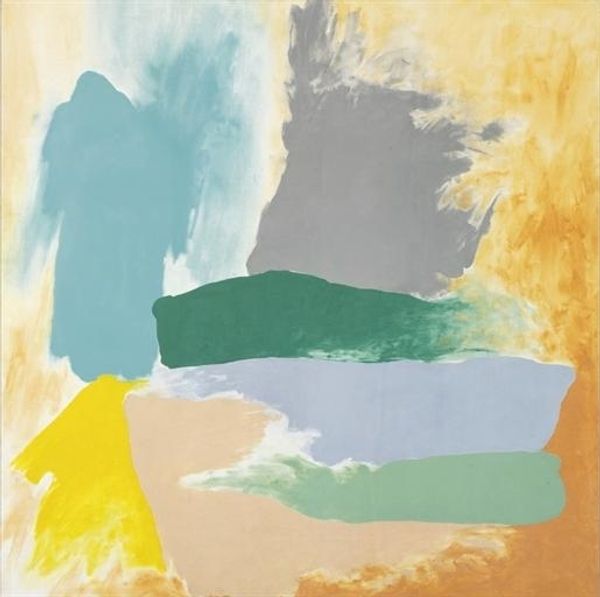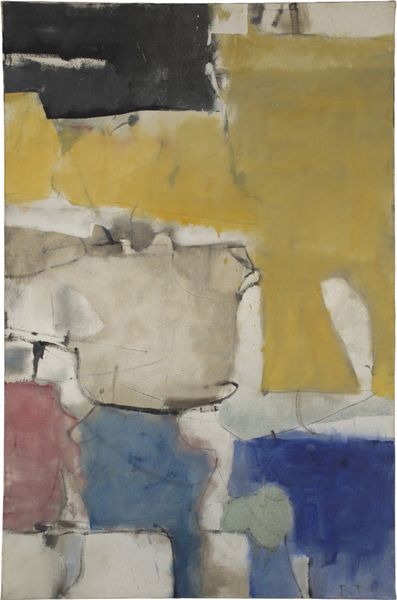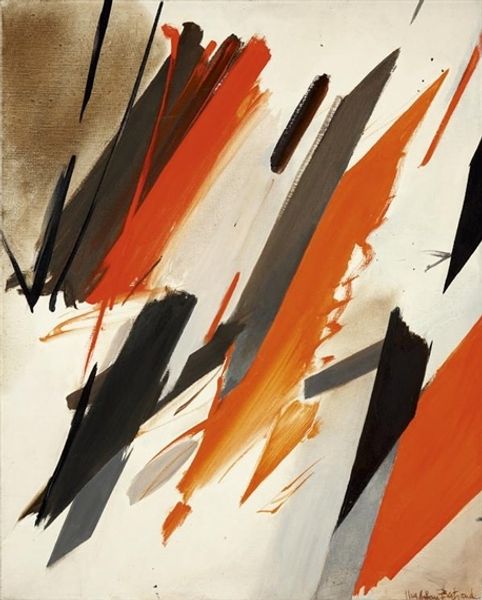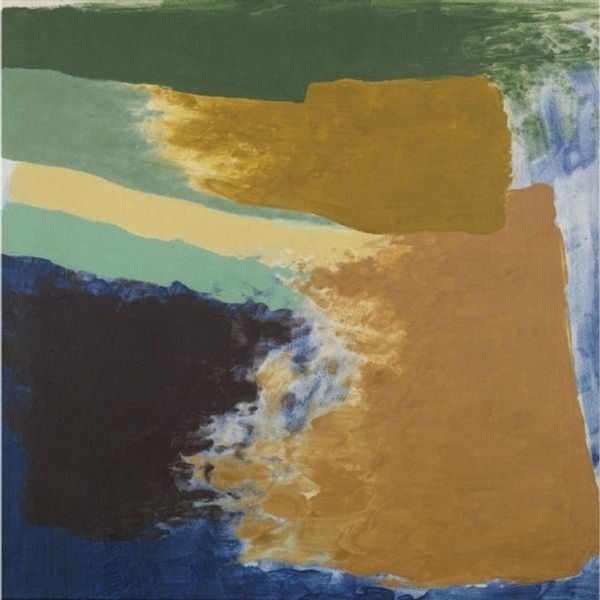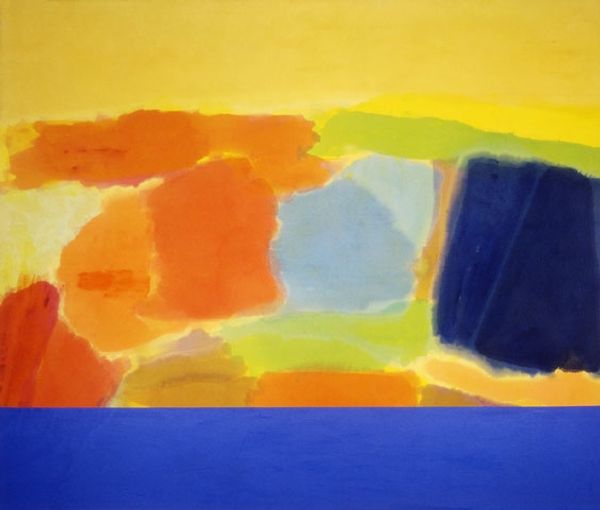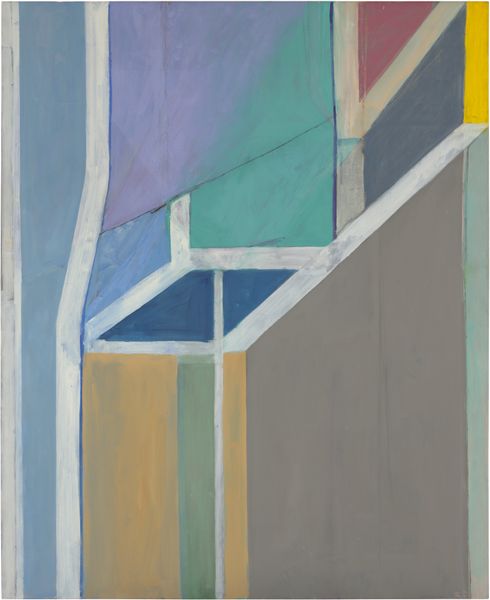
Copyright: Friedel Dzubas,Fair Use
Editor: We're looking at Friedel Dzubas's "Untitled Abstraction" from 1974, created using acrylic paint. The canvas is filled with vertical stripes of muted browns, yellows, and greens. It feels, at first glance, surprisingly grounded despite its abstract nature. What strikes you about it? Curator: The application of the acrylic interests me the most. Notice the thin washes and the visible canvas beneath the layers. This "staining" technique, popularized by artists like Helen Frankenthaler, completely merges the paint with the support. There's no separation here; it becomes one integral to the materiality of the canvas itself. We need to think about the labour and time required to produce this, particularly in relation to the booming post-war industry that produced the very acrylic paints the artist uses. Editor: That's fascinating! I hadn’t considered the physical relationship between the paint and canvas. It does look almost dyed. Do you think this challenges traditional notions of painting? Curator: Absolutely. It dissolves the idea of paint as a precious or inherently expressive medium. Dzubas utilizes industrial products – mass-produced acrylic – and elevates the process, rather than the personal gesture. The “stain” removes much of the artist’s touch in the same way mass manufacture strips human input from manufacturing objects, ironically imbuing an industrial mode of production into his painting.. Editor: So it's about making the act of creation itself – and the tools used – more visible, rather than focusing on some deeper meaning or narrative? Curator: Precisely. The work highlights its own construction, its own making. Consider the conditions that allow this form of art to exist - cheap acrylic paints readily available on the market - it's all part of the cultural context, part of a larger material dialogue. Editor: I never thought of abstract expressionism as being connected to material culture in that way! It's a very different lens through which to understand the artwork. Curator: Exactly! Thinking about art through its material and methods offers so many fascinating pathways for understanding it and ourselves.
Comments
No comments
Be the first to comment and join the conversation on the ultimate creative platform.
